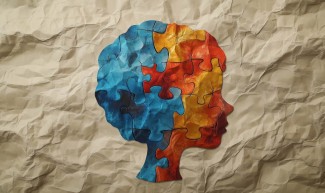In the context of World Parkinson's disease day on April 11th, the Institut du Cerveau - ICM focuses on the latest discoveries.
Parkinson's disease is the most common neurodegenerative disease after Alzheimer's. Second cause of motor disability with 4 million people in the world, Parkinson's disease is characterised by the death of a population of neurons, called dopaminergic. These neurons produce a substance, dopamine, playing a role in the transmission of information between neurons, and essential to the harmonious control of movements. Symptoms include slow movements, stiffness of the limbs and chest, tremor, and walking ability disorders. These motor symptoms can lead to disability and loss of total autonomy in the person suffering from this disease.
Drug treatments can reduce the symptoms of the disease, by using dopamine agonists. However, there is no treatment to slow the progression of the disease; we can't prevent neuronal death. Moreover, this neuronal degeneration is unfortunately not limited to dopaminergic neurons, nor to the motor system.
What are the risk factors of the disease ? What are the mechanisms responsible for the loss of neurons ? And how to counter them in order to slow the progression of the disease ? Researchers and clinicians take advantage of the Institut du Cerveau - ICM premises and its cutting-edge technology platforms to answer these questions and fight the disease.
IDENTIFY GENETIC RISK FACTORS IN ORDER TO PREVENT THE DISEASE
After the identification of 6 new genes involved in the onset of the disease, in 2014, Alexis BRICE's team has just discovered a new gene, VPS13C, involved in an early and very severe form of Parkinson's disease. Mutations of this gene lead to a loss of function of the corresponding protein, which could play a key role in the protection of neurons through maintenance of the mitochondrial function. This result provides a better understanding of the mechanisms leading to neuronal degeneration. Moreover, they will enable the establishment of a diagnostic tool for these very severe forms of the disease, in order to manage them as soon as possible.
A MECHANISM PROTECTING NEURONS
The team led by Olga Corti in Alexis Brice's group has discovered a mechanism protecting neurons from cell death. The loss of this new protective mechanism would contribute to mitochondria dysfunction and dopaminergic neurons degeneration in Parkinson's disease, caused by the Parkin gene mutation. These results enable us to consider new therapeutic prospects.
IDENTIFY MARKERS TO PREDICT AND FOLLOW THE PROGRESSION OF THE DISEASE
Marie Vidailhet and Stéphane Lehéricy's team enlightens us about the mechanism involved in the disease through the implementation of an integrated approach combining genetic, metabolic, physiological and clinical information. The ICEBEG study conducted by this team on 330 patients, at risk individuals and healthy subjects, has the objective of identifying prognostic and predictive markers of the disease to better understand and diagnose it as early as possible.
IDENTIFY NEW PHARMACOLOGICAL AND THERAPEUTIC APPROACHES
At the pharmacological approaches level, Etienne Hirsch's team has highlighted a viral peptide which seems to prevent neuronal degeneration and works on the protective effect of different molecules. It is an innovative and promising discovery for the development of new therapeutic applications.
To identify new therapeutic targets, Philippe Ravassard's team has developed innovative technological approaches. This team focuses on dopaminergic neurons. Research is ongoing in a mouse model to determine the role of a gene involved in schizophrenia, GPR88, on motor and non-motor symptoms of Parkinson's disease.
TREAT WALKING DISORDERS THROUGH DEEP BRAIN STIMULATION
Walking and balance disorders, and falls associated with them, caused by Parkinson's disease, constitute a major public health problem. Institut du Cerveau - ICM researchers have recently highlighted that a region of the brainstem is involved in walking control in Humans and that its stimulation would reduce the troubles which can occur. These studies confirm that deep brain stimulation could improve walking and balance disorders in some patients with Parkinson's disease. Thanks to these preliminary results, a larger therapeutic trial is currently ongoing.
REHABILITATION THROUGH THERAPEUTIC GAMES
Therapeutic games have also been set up by the BRAIN e-NOVATION lab including a rehabilitation therapeutic video game, TOAP RUN. Its objective is to rehabilitate patients with Parkinson's disease in order to reduce walking disorders. This highly promising technological breakthrough is currently being tested with patients.
A POTENTIAL TREATMENT
In a French multi-centre study, coordinated by Pr Jean-Christophe Corvol, Institut du Cerveau - ICM Clinical Investigation Centre director, in collaboration with IPSEN/Oncodesign labs, very promising results regarding a potential treatment for Parkinson's disease have been obtained.







